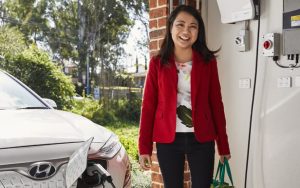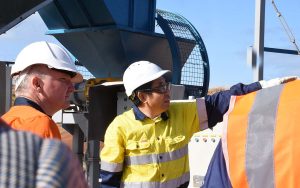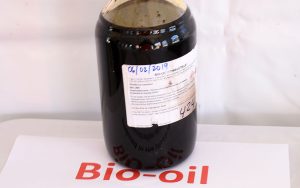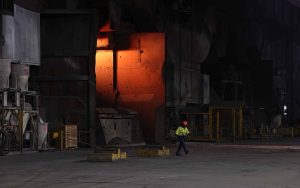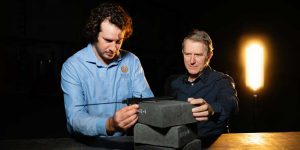A pioneering renewable biomethane facility in the eastern suburbs of Sydney is in operation.
Sydney Water’s Malabar Wastewater Treatment Plant already processes organic material in wastewater to produce biogas. In the past, the treatment plant has used that biogas to generate electricity and heat, or has flared it off.
In November 2020, ARENA agreed to provide $5.9 million towards the Malabar Biomethane facility to upgrade the biogas to high purity biomethane.

Now, the final piece in the puzzle is in place. Jemena’s Malabar Biomethane Injection Plant will add the biomethane to its gas distribution network.
The joint initiative between Sydney Water and Jemena, NSW’s largest gas distributor, is the first of its kind in Australia.
‘Here and now’
Jemena Managing Director, Frank Tudor said biomethane is a ‘here-and-now’ pathway for Australia to reduce emissions.
“Our Malabar Biomethane Injection Plant is turning what Sydney-siders flush away into an energy source that can be used in the same way as natural gas in manufacturing processes and heating and cooking appliances,” Mr Tudor said.
Jemena said its research found that in New South Wales alone, there are enough potential sources of biomethane to meet the needs of around a third of Jemena’s current NSW customers’ needs.
What is the difference between biogas vs biomethane?

Biogas is a mixture of gases and methane produced by bacteria eating organic waste in an oxygen-free environment.
That process is known as anaerobic digestion.
Sources of organic matter range from animal manure, municipal waste and food waste through to processed wastewater and sewage sludge.
The final composition depends on the mix of organic matter, selected bacteria and the processing conditions. Methane alone typically accounts for between 50 to 75 per cent of the volume of biogas. Carbon dioxide (CO2), water vapour and trace amounts of other gases make up the rest.
Biogas is combustible. It can be burnt directly to generate electricity or heat. But, depending on the concentrations of other gases, it burns with only 50 to 75 per cent of the energy of pure methane.
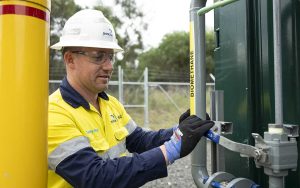
Alternatively, a process called upgrading can convert the biogas to near pure biomethane. The process removes the CO2, water vapour and trace gases to leave almost pure – 98 per cent – biomethane.
Biomethane is both chemically identical to fossil-fuel derived methane and suitable for injection into existing natural gas networks. But, because it is produced from organic waste, it is potentially a net zero emissions energy source.
Globally, around 90 per cent of all biomethane is upgraded from biogas.
How ARENA backs bioenergy
ARENA has funded other bioenergy and energy from waste projects.
In April 2023, biomass-to-energy company Renergi finished installation of its grinding pyrolysis reactor in Collie, Western Australia. Pyrolysis heats solid agricultural waste in the absence of oxygen to produce bio-oil, biochar and wood vinegar.
In 2022, Logan City Council in south-east Queensland opened a $28 million Biosolids Gasification Facility. ARENA in 2019 committed $6.2 million towards the then $17.3 million project.
The $510.8 million East Rockingham Energy to Waste Project aims to process up to 330,000 tonnes of residual waste per annum and recover energy to produce 28.9 MW of power. ARENA in 2019 provided $18 million funding to the project, due to complete in late 2026.
ARENA’s 2021 Bioenergy Roadmap estimates Australia’s bioenergy industry could create more than 26,000 jobs by the 2030s and reduce the country’s carbon emissions by 9 per cent.
LIKE THIS STORY? SIGN UP TO OUR NEWSLETTER



